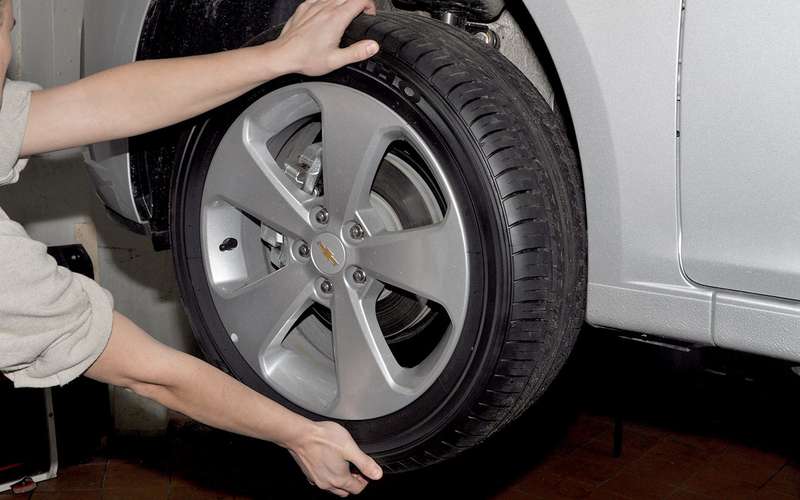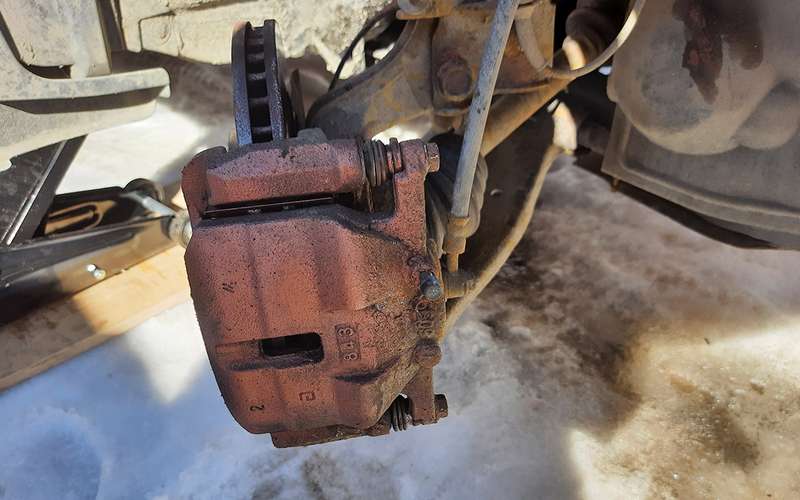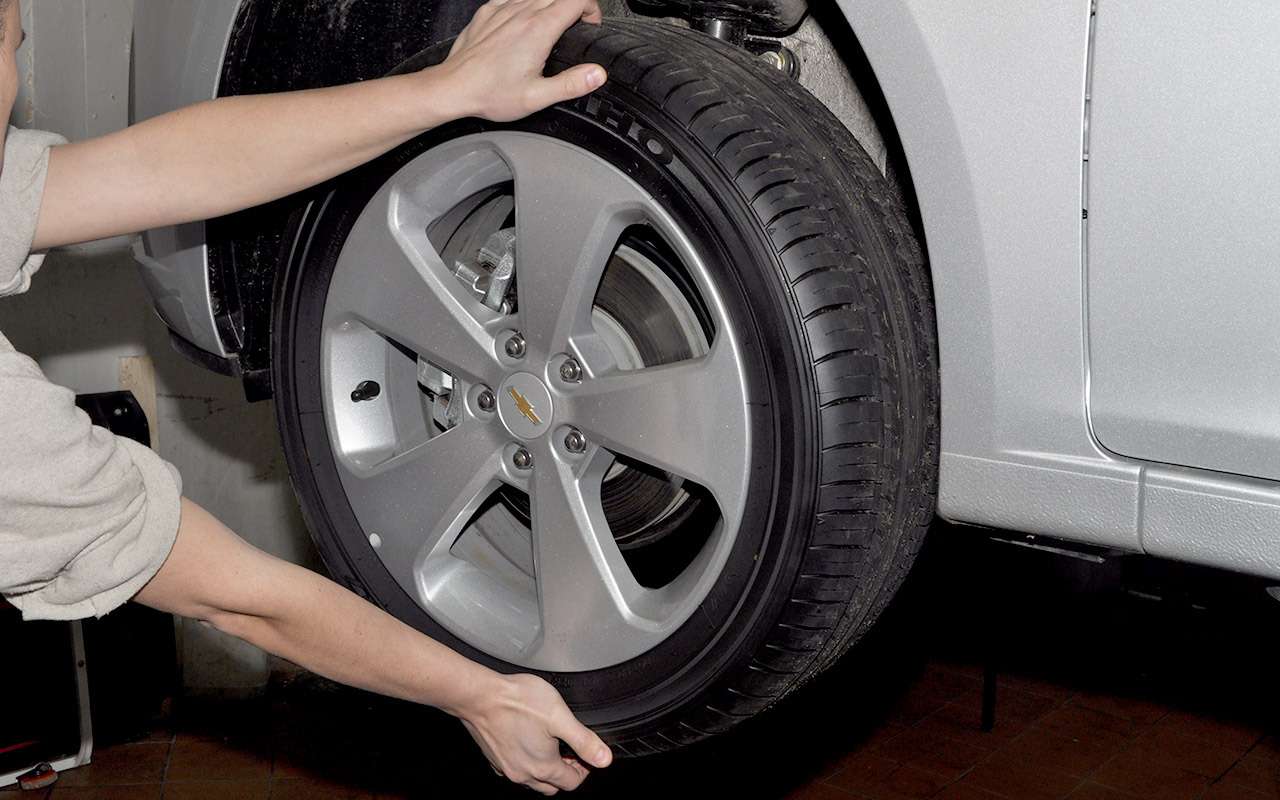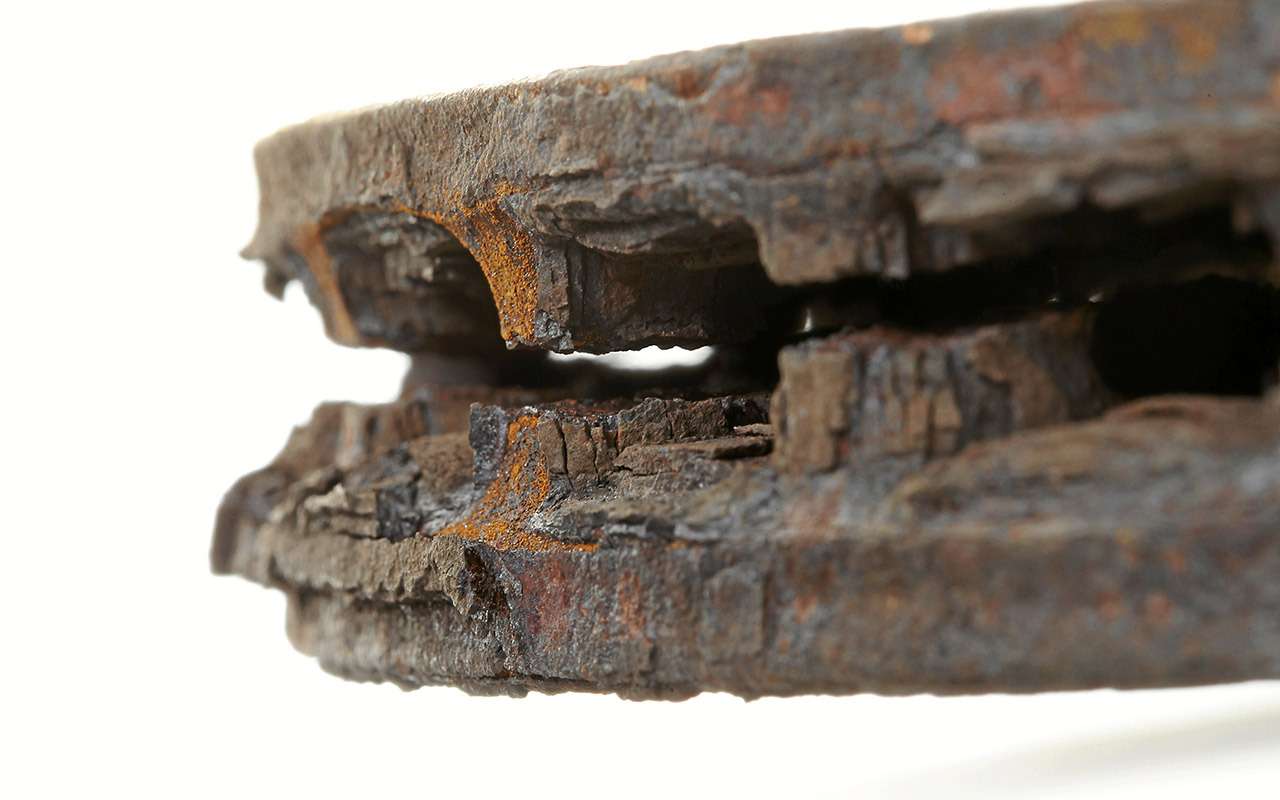Those who have both sets of tires on discs often “change” shoes themselves – in garages or in the countryside. The advantages are obvious: you save money, you warm up and you don’t have to queue. And at the same time you can arrange an audit of the suspension, steering, transmission. After all, not everyone has the opportunity to go to a well or an elevator for inspection and diagnostics.
It is not difficult, does not require much experience as an auto mechanic and does not take much time and effort.
Assess the condition of the body
The cross-section of the threshold of any modern car. If only the vertical center section is affected by corrosion, the threshold stiffness will not be sufficient to lift the vehicle.
Before lifting a monocoque vehicle over the threshold, make sure it can withstand this load. If corrosion has heavily eaten the body, the threshold can be washed away.
The first warning is a bottleneck at the beginning of lifting the car. In such a situation, it is better to put a plank about half a meter long under the jack. Then the pressure is distributed over most of the threshold and the wheel can be changed. Well, in the summer it is worth thinking about overboiling thresholds.
spin the wheel
By suspending the wheel, you can check various safety-related features of the suspension and braking system. Wheels without drive must be able to turn easily, softly and silently. Leave only a light rustle of the brake pads on the disc.
After a handshake, the wheel should make a few turns. If a hum or creaking is heard during rotation, the bearings are worn. This is a dangerous malfunction as a seized bearing can cause wheel lock.
If the wheel is difficult to turn by hand, a check of the braking mechanisms is required. It is possible that the pistons in the brake cylinders have lost their mobility, the caliper guides or brake pads are wedged in the guides. What threatens it? In any case, fuel consumption will increase. And in the worst case, the mechanisms will overheat, the liquid will boil – and the brakes will fail.
On drive wheels, a light humming bearing is difficult to hear: the wheel does not turn easily due to the resistance of the drives and elements in the gearbox. But here too, care must be taken to ensure that the rotation runs smoothly, without sharp jerks, which could indicate wear on the CV joints. And, of course, braking the disc with pads is unacceptable.
rock the wheel
We swing the suspended wheel in two planes. Holding hands from above and below – in a vertical plane. Taking from the sides – in a horizontal position. Only without fanaticism – do not drop the car from the jack. And for reliability, it is better to replace a safety rack.
In this way, on non-steered wheels, it is possible to assess the condition of the bearings and silent blocks of the wishbones.
And on checked ones, when rocking in a horizontal plane, you can feel the play in the details of the steering mechanism. Shaking in a vertical plane – check the condition of the ball joints.

We remove the wheel
And first of all, we look at how much is left of the brake pads. Particular attention to the condition of the brake discs. In cars that drive a little, the discs begin to develop deep, hard-to-eliminate corrosion called “disc plague.”
A thick layer of oxides, especially intensively formed on the inside of the discs, significantly reduces the working area of the pads. And grinding away this rust (it’s harder than the cast iron from which the disc is cast) is beyond the power of the brake pads. On the contrary, the rough layer literally cuts them off.
We try to shake the caliper with our hand – a slight mobility should be felt. This is confirmation that the caliper guides and the piston in the cylinder have not been acidified.
We carefully inspect the brake hoses for cracks, sharp kinks and traces of brake fluid. We try to see if there is a leak under the brake cylinder or even the slightest fogging.
At the same time, we inspect the rubber anthers of the caliper guide pins. We check that the rubber cap of the air vent has not been lost.

visual inspection
The ball bearing anthers, the tie rod end, the corrugated cover on the steering mechanism, the anti-roll bar anthers must be intact and free of traces of leaking grease.


The entire wheel arch of a serviceable, if not new, car should be dry. There should be no traces of fat anywhere. It is helpful to check for fluid and oil leakage from the engine and gearbox. This is often more noticeable when the wheel is removed.
Check for corrosion damage to body parts in the wheel arches. After all, this is where you see the front spars and parts of the subframe, which are responsible for the geometry and strength of the entire front of the body.
Are the standard plastic mudguards securely attached? This plastic element breaks down at speed and can damage your car and even cause an accident.
Everything is fine?
Then we mount summer wheels and lower the car. We check the tightness of the wheel bolts or nuts with a torque wrench. Pump up the wheels – and you’re done!
You can hit the road. And with the confidence that everything is in order with the car!
- Detailed photo and video instructions for self-repair and maintenance of the most popular models can be found here.
- We remind you that a first aid kit and a fire extinguisher should always be in the trunk of the car. Well, it’s best to keep a complete set of a motorist “Behind the wheel”.
- “Driving” can be read in viber
In addition to changing tires, it is worth performing several operations that will allow you to assess the condition of many parts and assemblies of your car.




